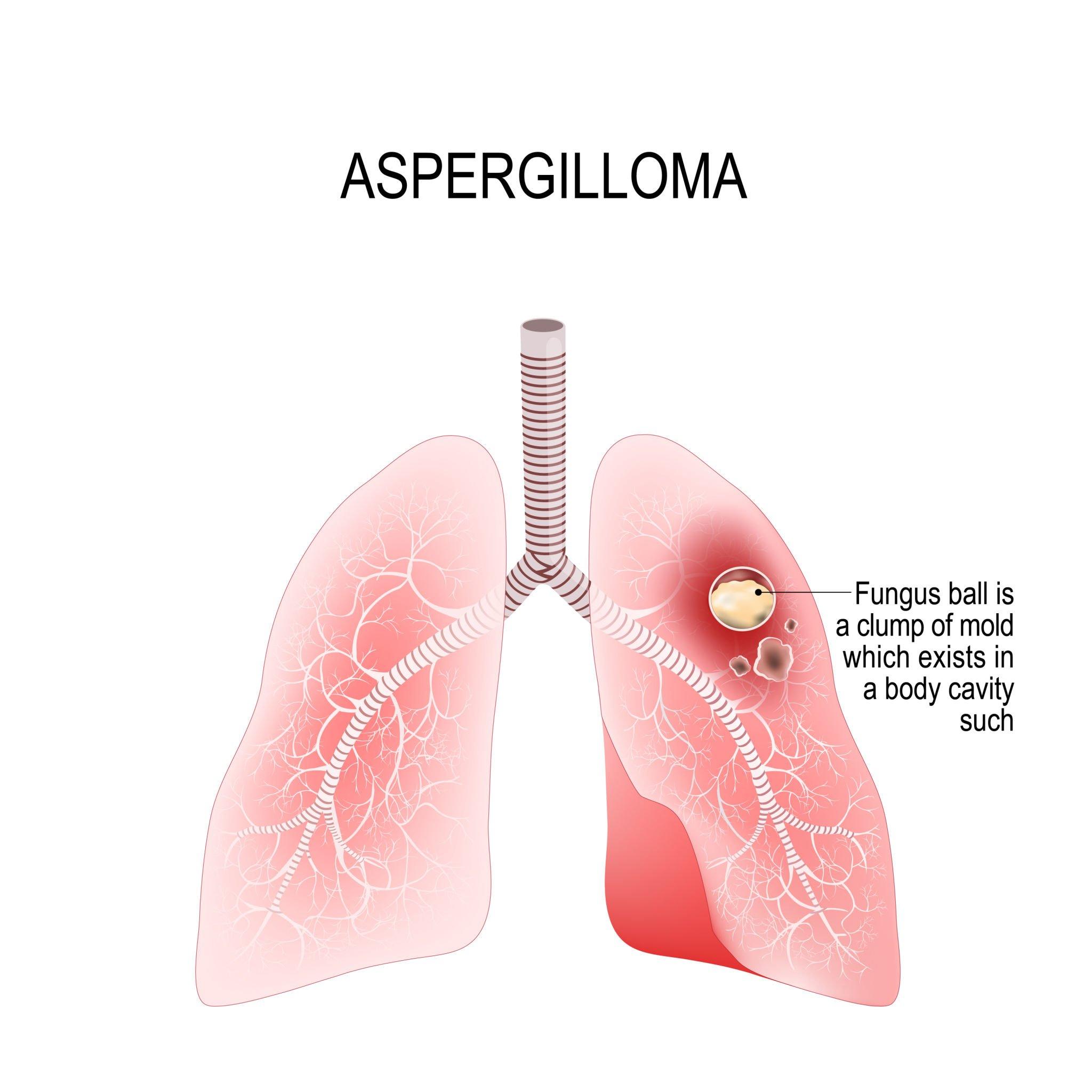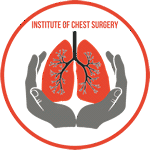What are the Different Stages of Esophageal Cancer?
Esophageal cancer is a formidable disease that affects the esophagus, the hollow tube that carries food and liquids...
+919999461292
MBBS | DNB (General Surgery, Gold Medalist) | DNB (Thoracic Surgery, Gold Medalist)
Thoracic & Lung Transplant Surgeon | Medanta – The Medicity, Gurugram

MBBS | DNB (General Surgery, Gold Medalist) | DNB (Thoracic Surgery, Gold Medalist)
Thoracic & Lung Transplant Surgeon | Medanta – The Medicity, Gurugram


Aspergilloma, also known as a “fungal ball or fungus ball”, is a condition arising from the growth of Aspergillus fungus within a lung cavity. It commonly afflicts individuals with pre-existing lung diseases, such as tuberculosis or chronic obstructive pulmonary disease (COPD). The most prevalent symptom of aspergilloma is hemoptysis, or coughing up blood, which can range from mild to severe, causing significant concern and necessitating medical evaluation. Diagnosis typically involves imaging studies like chest X-rays or CT scans, accompanied by laboratory tests to identify the presence of fungal elements in sputum or tissue.
Surgical intervention may be considered for patients with symptomatic aspergilloma, particularly those who experience recurrent hemoptysis that is not manageable with conservative treatments. The options for surgery include resection of the affected lung area or, in advanced cases, a lobectomy. Video-Assisted Thoracoscopic Surgery (VATS) has emerged as a preferred technique due to its minimally invasive nature, offering a quicker recovery and fewer complications than traditional open surgery. Overall, the treatment for aspergilloma must be individualized, weighing the potential benefits of surgery against the patient’s overall health status and surgical risk. Effective management of aspergilloma is crucial for improving the quality of life and outcomes for patients suffering from this complex condition.
For informed guidance on aspergilloma, consult the expertise of Dr. Mohan Venkatesh Pulle, a distinguished thoracic surgeon.
See, Aspergilloma is basically a fungal ball that grows in old lung cavities. Think of it like a mushroom growing in a small cave in your lung. Usually develops in people who had TB or other lung infections before.
Well, it can be serious if not treated properly. Main concern is bleeding in the lungs. But don’t worry too much – we have very good treatment options available nowadays.
This happens because fungal ball irritate blood vessels in the cavity wall. Small amount of blood in a cough is the common symptom with this condition. You should consult us immediately if this happens.
Most patients with Aspergilloma visit a chest specialist with symptoms of blood in sputum. However, it can also be detected incidentally on chest x-rays done for other purposes. So, the decision of surgery depends on symptom severity. In asymptomatic, small aspergilloma – observation is indicated. However, in symptomatic patients (hemoptysis) even if the lesion is small, surgery is indicated as a permanent solution.
Usually we perform VATS – Video Assisted Thoracic Surgery. It’s a minimally invasive procedure with small cuts. Sometimes we might need to do open surgery if the case is complex.
Typically, patients stay for 5-7 days after surgery. But see, everyone is different. Some recover faster, some take a bit longer. We’ll ensure you’re completely stable before discharge.
Sometimes antifungal medicines help, but honestly, in most cases, if the fungal ball is large and causing symptoms, surgery gives better results and best chance of cure.
Recurrence rate is quite low after proper surgery. But you’ll need regular follow-up and good lung hygiene to prevent any new fungal infections.
Usually develops in people who had previous lung problems like TB or bronchiectasis. Fungus finds empty space in the lung and starts growing there. It’s not contagious, so don’t worry about that.
Keep your surroundings clean, avoid dusty areas, and take medicines regularly. Most important – no smoking absolutely. Also, if you’re diabetic, keep sugar levels controlled.
Eat a healthy, balanced diet. Include protein-rich foods, fresh fruits, vegetables. Avoid very spicy food if you’re bleeding. Keep yourself well hydrated.”
“All patients can return to desk jobs in 3-4 weeks. For physical work, you might need 4-6 weeks. We’ll give you a fitness certificate when you’re ready.”
Note: Remember, I’m always here to help. Don’t hesitate to contact me or my team with any concerns. Good communication between the doctor and the patient is very important for successful treatment.
Esophageal cancer is a formidable disease that affects the esophagus, the hollow tube that carries food and liquids...
Esophageal cancer is a formidable and often challenging disease that affects the esophagus, the muscular tube that carries...
Esophageal cancer is a challenging and potentially life-threatening condition that requires timely diagnosis and appropriate treatment. When esophageal...
Esophageal cancer is a serious and potentially life-threatening disease that affects the esophagus, the muscular tube that carries...
Esophageal cancer is a formidable adversary that can silently develop within the esophagus, the muscular tube connecting the...
Esophageal cancer is a serious and potentially life-threatening condition that affects the esophagus, the muscular tube responsible for...
MBBS | DNB (General Surgery, Gold Medalist) DNB (Thoracic Surgery, Gold Medalist)
Thoracic & Lung Transplant Surgeon
Medanta – The Medicity, Gurugram
An esteemed thoracic surgeon, excels in minimally invasive procedures (VATS & Robotic surgery) for both benign and malignant lung conditions. With a stellar academic background and international training, he is dedicated to offering compassionate and expert patient care.

Website designed and Developed with ❤️ by GigaWebZone
Copyright © 2023 All rights reserved.
WhatsApp us